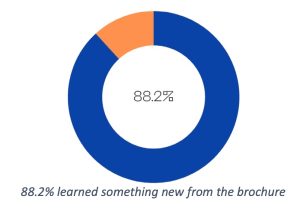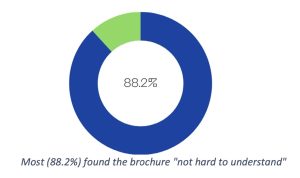School of Medicine
30 The Impact of Air Pollution Exposure on Childhood Cancer Survivors: Creating and Obtaining Feedback from Researchers on an Informative Brochure
Sarah Bayardo (University of Utah); Anne Kirchhoff (Pediatrics, University of Utah); Marlon Lopez (University of Utah); Karely Mann (University of Utah); and Judy Y. Ou (University of Utah)
Faculty Mentor: Anne Kirchhoff (Pediatrics, University of Utah)
Introduction
Air pollution is a significant public health problem that, and more than 4 in 10 Americans live in places with unhealthy levels of air pollution. Air pollution is linked to many cancer types. To inform childhood cancer survivors, their families, and caregivers about the potential negative impact of air pollution exposure, we created an informative brochure on this topic. We received feedback on our first brochure draft through an online survey sent to researchers connected to Huntsman Cancer Institute (HCI).
Methods
We conducted a systematic literature review on the potential risk childhood cancer survivors face when exposed to air pollution through PubMed; 22 papers were reviewed and summarized. We compiled our literature review findings into a brochure focused for parents and caregivers of young cancer survivors using concise and easy-to-understand language, and visuals appropriate to the topic. A survey was created through REDCap and sent to 37 HCI staff and researchers to get feedback on the brochure’s phrasing, language, and visual appeal. The questions on our survey included demographics, familiarity with air pollution science, brochure understandability, opinions on brochure visuals, preferred section, how ready the brochure is to be released, and feedback on how the brochure could be improved.
Results
A total of 17 participants completed the survey; 88.2% are females, with 70.6% having more than a 4-year college degree. We asked if the brochure was ready to be released on a scale of 1 to 10, 1 for “not ready” and 10 for “ready” the mean was 7.33. The favorite elements of the brochure were the visuals (100%) and the key messages (75%). The least favorite elements were the formatting and the colors.


Conclusion
Our brochure received generally positive feedback. Creating approachable ways of expressing scientific information is vital to protecting vulnerable populations such as children from air pollution. The following steps include getting feedback from parents and caregivers of survivors for future dissemination. The following steps include improving the brochure, mainly changing the color palette, title, formatting, and text length. Finally, getting feedback from parents and caregivers of survivors for future dissemination.
Acknowledgment
This work was supported by the Office of Undergraduate Research’s Summer Program for Undergraduate Research and the National Institute of Environmental Health Sciences award R25ES031497. The content in this presentation is solely the responsibility of the authors and does not necessarily represent the official views of the National Institutes of Health.

